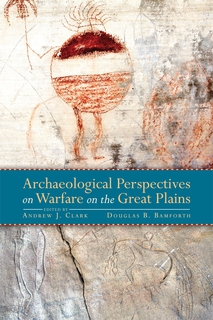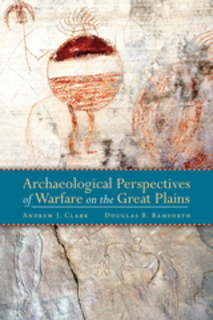Archaeological Perspectives on Warfare on the Great Plains
“Truly impressive, this book will generate tremendous interest.”
—Mark W. Allen, California State Polytechnic University
“The best book-length coverage of conflict among small-scale societies within a regional (cultural) context that has been published for a number of years. . . . [A]ny archeologist interested in the role of warfare in prehistoric North American societies should buy a copy.”
—George Milner, Pennsylvania State University
“An important contribution to the growing literature on warfare in prehistoric America.”
—American Archaeology
“This volume has value to those who study the Great Plains and those who wish to understand war and peace at a broader level. . . . any scholars who study group conflicts would find these analyses important sources of inspiration.”
—Midcontinental Journal of Archaeology
“The volume presents a rich compilation of warfare research and is of great value to scholars researching violence, farming populations, rock art and grassland archaeology.”
—Antiquity
"This is a rich, broadly encompassing, and well-written volume that will be of great benefit for a wide range of Plains scholars."
—Great Plains Research
The Great Plains has been central to academic and popular visions of Native American warfare, largely because the region’s well-documented violence was so central to the expansion of Euroamerican settlement. However, social violence has deep roots on the Plains beyond this post-Contact perception, and these roots have not been systematically examined through archaeology before. War was part, and perhaps an important part, of the process of ethnogenesis that helped to define tribal societies in the region, and it affected many other aspects of human lives there. In Archaeological Perspectives on Warfare on the Great Plains, anthropologists who study sites across the Plains critically examine regional themes of warfare from pre-Contact and post-Contact periods and assess how war shaped human societies of the region.
Contributors to this volume offer a bird’s-eye view of warfare on the Great Plains, consider artistic evidence of the role of war in the lives of indigenous hunter-gatherers on the Plains prior to and during the period of Euroamerican expansion, provide archaeological discussions of fortification design and its implications, and offer archaeological and other information on the larger implications of war in human history. Bringing together research from across the region, this volume provides unprecedented evidence of the effects of war on tribal societies. Archaeological Perspectives on Warfare on the Great Plains is a valuable primer for regional warfare studies and the archaeology of the Great Plains as a whole.
Contributors: Peter Bleed, Richard R. Drass, David H. Dye, John Greer, Mavis Greer, Eric Hollinger, Ashley Kendell, James D. Keyser, Albert M. LeBeau III, Mark D. Mitchell, Stephen M. Perkins, Bryon Schroeder, Douglas Scott, Linea Sundstrom, Susan C. Vehik
Texts
Uncategorized

Archaeological Perspectives on Warfare on the Great Plains
by Andrew J. Clark- 0This text has 0 annotations
- 0This text has 0 highlights
Metadata
- publisherUniversity Press of Colorado
- publisher placeDenver, Colorado
- rights
- rights holderUniversity Press of Colorado


